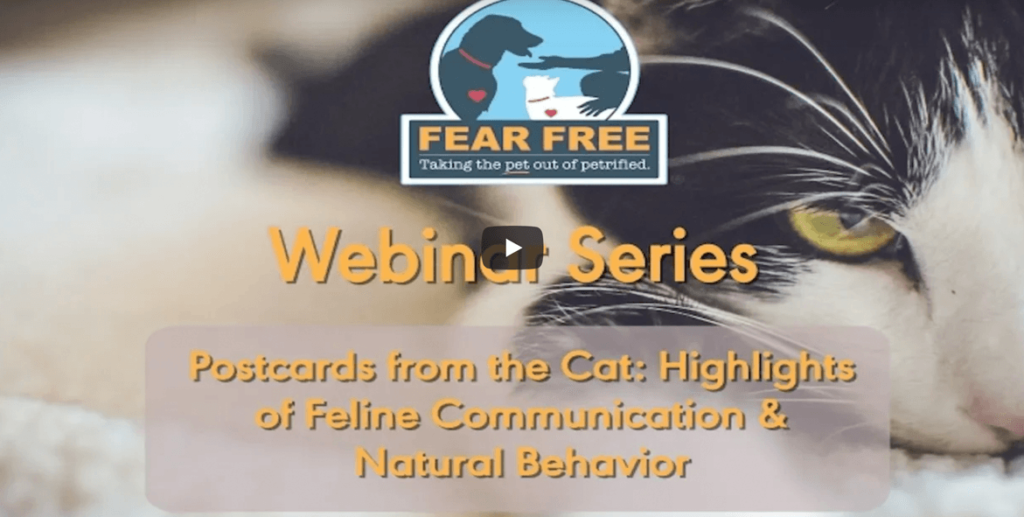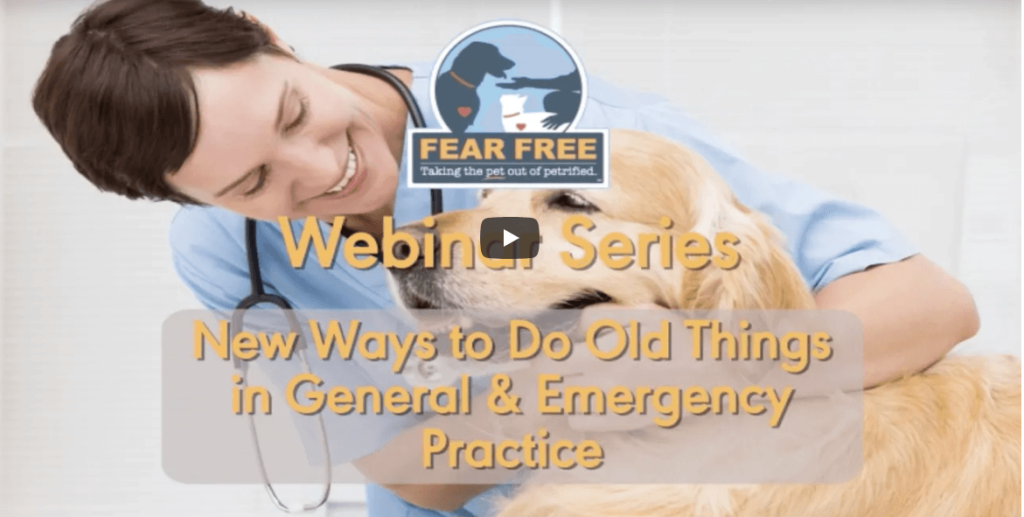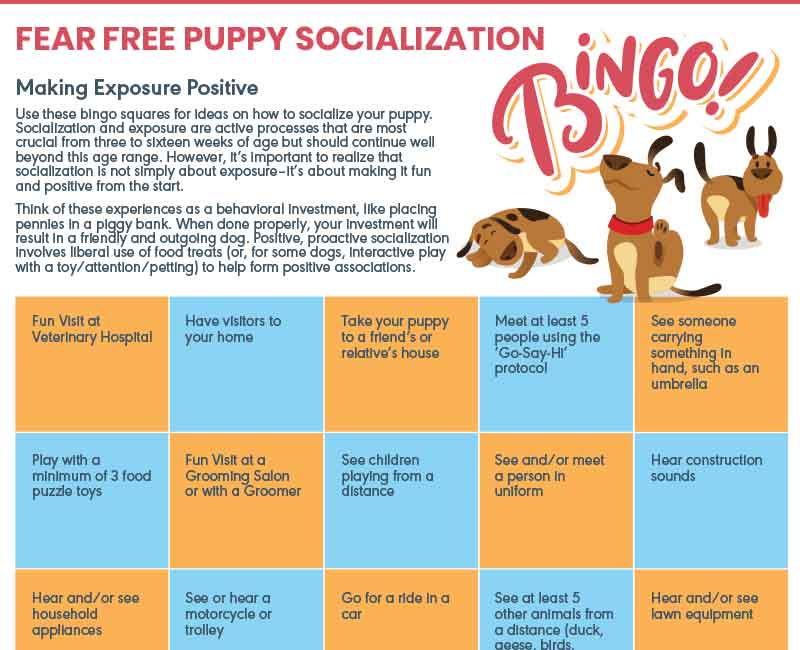
Certified Practice Member Exclusive: Fear Free Handling Hacks
From “hot cages” to fidgeting felines, hone your Fear Free skills with applied animal behaviorist Traci Shreyer.

Certified Practice Member Exclusive: Fear Free Handling Hacks
From “hot cages” to fidgeting felines, hone your Fear Free skills with applied animal behaviorist Traci Shreyer.

I Don’t Want to Hear It: Prevention of Unnecessary Operational Noise
Listen to Practice Certification Manager Dr. Rachel Abrams’ lively discussion on some fun and unique ways to prevent common veterinary practice operational noises.

Postcards from the Cat: Highlights of Feline Communication & Natural Behavior
Learn about the facets of feline communication and behavior, as it relates to working and living with this truly fascinating species.
Dr. Marie Hopfensperger is one of two board-certified veterinary behaviorists in the state of Michigan. She graduated with honors from the College of Veterinary Medicine at Michigan State University in 2009. She was a small animal primary care veterinarian in northern Michigan before returning to academia to pursue her passion for behavior. She completed a non-traditional residency, spending time at North Carolina State University and Michigan State University. She has taught primary care and behavior medicine at Michigan State since 2013. Her areas of interest are behavioral medication, aggression, and feline inappropriate urination. Her household includes a human son, two cats, two dogs, two parakeets, and a rabbit, most of whom were adopted from area shelters.

Take a Penny, Leave a Penny: Sharing Best Practices from 2018
As a Fear Free Certified Practice, you are already doing so many great things to safeguard the emotional wellbeing of your patients, clients, and care team. What better way to ring in the new year than to hear and see what unique and creative hacks your Fear Free Certified Practices colleagues have come up with? You don’t have to do anything! Just sit back, relax, enjoy, and be inspired!

Communicating Fear Free to Pet Owners: Why It Matters
If you’re not sure what “Clients are made aware of Fear Free tools and techniques” means or not sure why it matters, then join Practice Certification Manager, Dr. Rachel Abrams for a down-n-dirty discussion of what this looks like and why it made its way into the Practice Certification standards.

Every pet’s final visit to the veterinarian should be as Fear Free as the first. In this one-hour module, you will learn how to utilize pre-planning to create a meaningful and low-stress experience for pet and owner. It will cover uses of pre-euthanasia sedation and anesthesia to give the pet a gentle euthanasia and the benefits and downsides of different euthanasia techniques. Also explored will be the dangers of compassion fatigue and how to prevent or alleviate it.
This course was written by Kathleen Cooney, DVM, MS, CHPV, founder of the Companion Animal Euthanasia Training Academy.

Tabitha Kucera, a veterinary technician, has learned a lot from her experiences teaching Fear Free to other veterinary professionals, and maybe the biggest lesson is the importance of using the same principles on people as you do on animals.
“Positive reinforcement encourages initiative and creativity, it forgives mistakes, it creates enthusiastic learners and accelerates learning,” she says. “It’s the same for people.”
Build a Constructive Culture
The benefits should seem obvious once you’ve worked with animals that way. But applying these methods doesn’t always come naturally, she says. She recalls a class she attended at the Karen Pryor Academy. Most of the students were trainers, along with Kucera and two other vet techs. At one point, each person did an exercise in front of the class and then fellow students were asked to talk about what they thought had been done well.
“For the techs it was harder than for the dog trainers, and that was an epiphany for us,” she said. “We talked about it later—it’s that we’re not used to getting constructive feedback.”
Not only was it more difficult to give positive comments, it was also frustrating at first to get them.
“We were like, why don’t you tell me what I did wrong? Just tell me what I did wrong so I can fix it.”
But if you’ve studied behavior, you know all the reasons why “Just tell them when they’re wrong” is a bad way to train. One is that just saying “no” to the wrong behavior doesn’t tell the learner what the right behavior is. If you want staff to use less stressful techniques, saying “Don’t do this,” while well-meaning, doesn’t communicate the desired alternative.
“If you’re used to scruffing, I can’t just tell you not to scruff, which is what I see a lot of,” she says. “I hear a lot of ‘less is more,’ but what does that mean? You need to define the behavior you want.”
Say No to No
Maybe even more important is the effect of all those “nos” on the recipient.
“With positive reinforcement, the biggest difference is we focus on the good,” she says. “The way some other training techniques work—and the way people often work with each other—is we focus on the negative: I’m going to tell you what you did wrong and completely ignore all the good stuff you did. That creates an environment where people are afraid to make mistakes and afraid to ask questions.”
Being told that you’re wrong is essentially a form of punishment, and learners who are afraid to make mistakes because of repeated punishment soon shut down and are afraid to try anything. That makes it impossible to learn something new. And imagine the frustration of doing the same thing for years and then being told it’s wrong. We wouldn’t do that to an animal, but we often don’t realize we’re doing exactly that to our fellow humans.
“You can’t punish them when this is how they were taught,” she says. “I say, ‘You’re not wrong in what you’re doing, but fortunately medicine progresses, and we’ve learned a lot of great new ways to handle animals that make it easier for us and for them.’”
Be careful, too, of how interactions can convey the message “You’re wrong” without saying exactly that out loud. “You can’t run over and say, ‘Let me take over,’ because then you just insulted that person,” she says. “When I see things that are concerning, I’d just say, ‘Hey, you guys need some help?’”
Show, Don’t Tell
Simply using the techniques and letting people see what happens can be the best way to start. “First thing first, wherever I am, I use these skills, and people notice,” Kucera says. “Soon they’re coming to me and asking if they can learn this.”
It’s important to remember that trying something new can be anxiety-provoking, especially if you’re invested in and comfortable with techniques you’ve been using for years. Make it clear that it’s okay to try and fail. “I also don’t say ‘It’s do this or die,’” she says. “Try it one time, and if it doesn’t work, we’ll do it the way that you’re comfortable.”
Another thing that we know for our animals but often forget for our fellow humans is that different reinforcers work for different individuals. When she’s trying to persuade people of the benefits of Fear Free, Kucera says, everyone cares about decreasing fear and stress in the animals, but other motivators can differ by role. For a practice owner, she’ll talk about the business advantages, while for a tech who restrains animals, she’ll say, “You’re in your 30s; you need to go home and not be in pain every day.”
Set Realistic Goals
When Kucera talks to people who are excited by her presentations, she often has to talk them down a bit. “I say, ‘I love your enthusiasm, but I don’t want you to go back to your shelter or hospital and say we have to do all this right now,’” she says. “Because I did that in the past, and it shuts people down.”
Remember that new skills need practice. “I set realistic expectations for people: I don’t expect you to do this perfectly tomorrow,” she says. And start slow, just like you would with a pet. “Pick one or two things for your practice or shelter and start there, because from there it’s going to spread like wildfire but not if you don’t set your staff up for success.”
This article was reviewed/edited by board-certified veterinary behaviorist Dr. Kenneth Martin and/or veterinary technician specialist in behavior Debbie Martin, LVT.

New Ways to Do Old Things in General and Emergency Practice
Most dogs, cats, and pet owners don’t like visiting the veterinary hospital. Their experience is far from spa-tacular! From vaccinations to X-rays, healthcare providers and pet owners are desperate for gentler, more enjoyable ways to perform common procedures. In this webinar, Jonathan Bloom, DVM, goes beyond theory and philosophy and explores innovative Fear Free-based techniques used in practice to create the best experience imaginable for pets, pet owners, and healthcare providers. Sponsored by Elanco.


The term “nutraceutical” is a mashup of “nutrition” and “pharmaceutical.” Beyond that, because they’re unregulated, there’s no legal definition, and every journal article you read will likely start by spending several paragraphs grappling with this fact. For practical purposes, nutraceuticals are food-derived substances that are claimed to have an effect on health. For example, alpha-casozepine, derived from milk protein, affects neurotransmitters in a similar way to benzodiazepines and may help reduce anxiety.
Looking at a list of these products, their claimed effects, and how they’re sold, it can be a little difficult to see how they are different from drugs–after all, some drugs are derived from nature, too. Lisa Radosta, DVM, DACVB, of Florida Veterinary Behavior Service in West Palm Beach, says, “They are really in my mind not that much different from drugs, except they’re unregulated, but in the mind of the consumer they are different because they are ‘natural,’ and that is something that a lot of people are looking for.”
The desire for something “natural” can be based on misconceptions both about nature and about drugs. “Natural” doesn’t necessarily equal “safe”: the natural world is chock-full of poisonous substances. In some cases, clients may simply need some reassurance about the drug options.
“When clients are thinking of behavior meds, they’re thinking of sedatives that will ‘turn their animals into zombies’ and change their personalities,’ says Jill Orlando, DVM, DACVB, of Carolina Veterinary Behavior Clinic in Raleigh, North Carolina. “When they think of a supplement, they don’t think it’s going to affect their animals as strongly as what they perceive a behavioral drug does.” She also notes that people may unconsciously project the stigma of human mental illness–and the associated medications–onto their pets.
But there can be reasons to consider these products beyond client psychology, if only because there are so few approved medications for fear, anxiety, and stress in animals. The trick is to sift through the research to figure out the safe and effective choices.
Dr. Radosta prefers to use the term “supplement” to also include products derived from herbs– essentially all the products clients may find on the internet or at high-end pet stores and bring in to her with questions–and they all require the same careful consideration, first, for safety.
“A lot of these supplements haven’t been given to a group of dogs to see what they do to the liver, to the kidneys; nobody knows,” she says. “So that’s kind of scary. On the other hand, we shouldn’t throw the baby out with the bathwater. The research does show that some of them can offer benefits for fear, anxiety, and stress in animals. We don’t want to throw things away just because they aren’t a drug, but we also don’t want to assume they’re safe.”
Consider the source of a product. “What I tell my clients and veterinarians is, we try to use supplements from companies that we trust–as much as you can trust a company. We try to use supplements made by pharmaceutical companies. It’s not that I love pharmaceutical companies, but it’s that I can hold someone responsible.”
Whatever the source, read the research and evaluate the evidence yourself. Given the lack of regulation, you first need to know if a product has been properly tested for safety in dogs and cats. “For me, that’s key. Did someone give this to a bunch of animals? What is the LD50? Do we know? We shouldn’t be playing around with an animal’s life.”
Regarding evidence for effectiveness, methods of studies can vary widely. One thing to consider, says Orlando: “Is the research done on the actual product, or is it done on the functional ingredient in that products? That’s not to say that that information isn’t useful, but it doesn’t necessarily prove that product is effective.” Other factors include but are not limited to the following:
If you’re still not sure, Dr. Radosta says, consult a veterinary behaviorist—that’s why they’re there!
Once you’ve decided on a product, Dr. Radosta says, make sure clients have reasonable expectations about efficacy. The common expectation that “natural” means “won’t affect the animal as strongly” is correct; it means it’s not going to have as strong a beneficial effect as a drug. Where you might get a 50 percent effect on a behavior from a drug, you can expect about half that from a supplement. “That in my practice is considered a positive outcome, and the day the client takes the supplement home I make that very clear,” she says. “If you say your dog is 25 percent changed, that’s a success.”
Because effectiveness is reduced, more than one supplement may be needed. One of Dr. Radosta’s clients whose dog has an extreme storm phobia now administers 11 capsules a day, a regimen that might add more stress for some owners and pets. These products also tend to be more expensive than their pharmaceutical counterparts, a cost that can add up quickly.
Finally, with either supplements or medications, the ideal solution relies on more than just pills; it should also involve behavioral modification. Realistically, though, this isn’t always going to be possible. Not everyone can afford a skilled trainer, and sometimes life is just too overwhelming to add another burden on clients’ time. “I meet a lot of people here in south Florida who are taking care of elderly parents and I do discuss that with them, but I have empathy,” Dr. Radosta says. “I say straight up: your life looks really stressful to me, how are you feeling, can you do this?”
But nearly everyone can handle some simple changes such as crating a fearful or aggressive dog in another room when company comes to avoid exposing a pet to triggers.
“Behavior modification can’t always happen,” Dr. Radosta says, so sometimes we do what we call medication and management: supplements or medication–something that changes neurochemistry–and managing the environment so the behavior can’t occur.”
This article was reviewed/edited by board-certified veterinary behaviorist Dr. Kenneth Martin and/or veterinary technician specialist in behavior Debbie Martin, LVT.